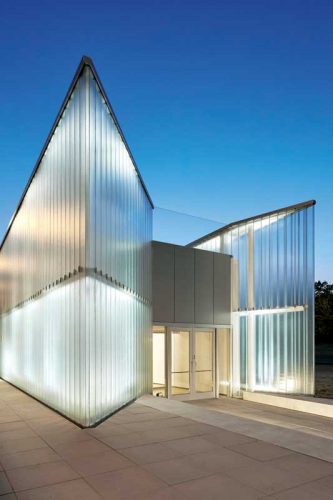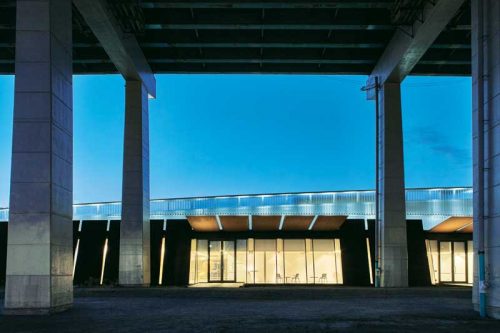Building for the future on a national historic site

By Said Elieh
Conserving national history for future generations requires careful protection and maintenance. New construction in these spaces must be sympathetic to the existing landmark structures and settings, and public needs. Sensible construction allows these sites to be better appreciated, studied, and preserved. Additionally, the age and significance of historic locations often require new structures built on or adjacent to them to meet special guidelines, regulations, and codes.
The delicate balance between conserving a historic location for posterity, while enhancing the appeal of the site for contemporary and future visitors, is the focus of this article. It examines the new visitor centre at the Fort York National Historic Site of Canada, and the building materials and techniques employed by Kearns Mancini Architects (Toronto) and Patkau Architects (Vancouver) to enhance the site, while respecting the legacy and tradition of the antique structures within.
Fort York is located in downtown Toronto, nestled near the shoreline of Lake Ontario. Built originally in the late 1700s, it was the site of a major battle during the War of 1812, which lead to the occupation of Fort York and the destruction of York (modern-day Toronto)—at the time, the provincial capital of Upper Canada. The fort functioned as a military post until the 1880s, and was lightly used during WWI and WWII. Since the early 1930s, it has remained relatively undisturbed, despite the significant urban growth around it.
‘Untouchable’ challenge
One of the greatest challenges of the project, according to architect Jonathan Kearns, was to create a visitor centre on an archeological site that could not be disturbed, situated in the midst of an industrialized urban setting, and removed from its original historic context. Two centuries of infill and development had extended the shoreline of the lake about 500 m (1640 ft) from its original location beneath the walls of the fort, taking away the impact of the facility as a defense against naval attack.
When building an addition to, or otherwise altering a historic place, The Standards and Guidelines for the Conservation of Historic Places in Canada states,
The construction of an exterior addition in an historic place may seem essential for a proposed new use, but the Guidelines emphasize that such new additions should be avoided, if possible, and considered only after it is determined that those needs cannot be met on another site or by altering secondary, non-character-defining interior spaces. An addition should be designed so that the heritage value of the historic place is not impaired and its character-defining elements are not obscured, damaged or destroyed. The addition should be physically and visually compatible with, subordinate to, and distinguishable from the historic place as stated in Standard 11.

The conservation standard required the proposed Fort York Visitor Centre be new construction, due to the need to preserve the “character-defining” structures of the fort itself. Hemmed in on all sides by glass and steel high-rise apartments, rail lines, and the superstructure of the elevated Gardiner Expressway, the fort grounds afforded a very limited amount of space to build the new visitor centre.
Overcoming the design challenges and respecting the heritage value of the fort and its historic buildings, the new visitor centre (which opened in late 2014) is a low-slung two-storey edifice, tucked away under the Gardiner’s monolithic superstructure.
Experiencing the fort
Reflecting the industrialized character of the neighbourhood today, the entrance to the visitor centre is an artificial escarpment of weathering steel. The vertical faces of the sloped steel panels resemble industrial fencing or fortified walls that feel surprisingly unimposing and natural in contrast with the massive expressway overhead. Inside, the centre houses the lobby featuring permanent and temporary exhibitions, an informal dining area, and offices. Guests move from the lobby exhibits through long hallways that gradually rise toward the fort grounds. The lines that define the entire fort area—the tall legs and long ribbon of the expressway, the rail lines in the distance—all culminate in a literal timeline running the length of the centre’s rising halls, depicting events from the War of 1812.





